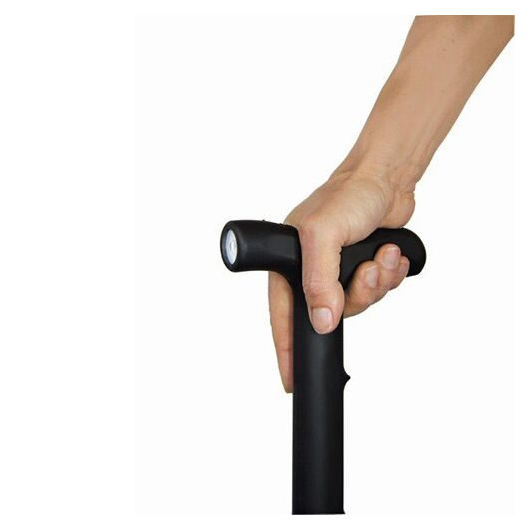Zap Cane Stun Gun
This ZAP Stun Cane is a great self-defense device for the elderly or for anyone who needs support while walking. This taser cane measures 32 inches and can be easily extended to 36 inches to accommodate users of different heights.
When threatened, you can either use the built-in super bright LED flashlight to blind your attacker or deliver a shocking 1 million volts of electric power that will cause your attacker's muscles to lose control, effectively immobilizing him for 5-10 minutes.
With the portable and non-lethal ZAP cane having a length of 32 to 36 inches, it also means that you can defend against your assailant from a safe distance away. When not in use, you can store your taser cane weapon in the included carrying case. This stun walking cane also comes with a built-in rechargeable battery.
Stun Cane for Walking
The ZAP walking cane with stun gun is perfect for your daily or nightly walks to not only help keep your balance but also to give you a million volts of stopping power. This gives you law enforcement type of security protection while protecting you from aggression or attack.
Features:
- 1 million volts of stopping power or 4.6 milliamps
- 7 1/2" of shocking electrodes wrap the entire bottom
- Intimidating electrical arc and crackle
- Adjustable cane length of 32-36"
- Weight capacity of 250 lbs
- Safety indicator light with on/off switch
- Built-in ultra-bright LED flashlight
- Built-in rechargeable Ni-MH battery
Includes:
- High-quality nylon carrying case
- Includes AC adaptor for easy battery recharge
- Includes extra rubber tip for the end of the cane
NOTE: PLEASE CHARGE STUN GUN FOR 8 HOURS when you receive it using the wall charger. It will not operate properly until fully charged.
Taser Cane
By incorporating a stun gun with a walking stick, you get a versatile cane stun gun you can use to keep yourself protected. 7 1/2 inches of shocking electrodes at the bottom of the taser canes give you plenty of space and opportunity to touch someone and deliver the powerful electrical shock.
If someone tries to grab the taser cane from the bottom, they will get shocked and will have to immediately let go. The 1 million volts will forcefully repel their attempt to disarm you. The activation button is right under the handle.
Like many other stun guns, this model comes with an led flashlight you can use to light up the area so you can see more easily. Use this also to blind or disorient your attacker so you can have the armed advantage when delivering the shock.
Though not exactly military or police products, they are perfect for a civilian who already uses canes but wants something with a little more personal protection.
✦ Is the Zap Cane Legal?
Laws regarding stun canes vary by location. In most states, they are legal for personal use, but some areas have restrictions on stun devices. Check your local laws before purchasing or carrying a stun cane.
✦ Is the Stun Cane a Good Self-Defense Option for Seniors?
Absolutely! The Zap Cane is a discreet, non-lethal self-defense tool that doubles as a sturdy walking aid. Its built-in stun feature allows seniors or anyone needing extra mobility support to defend themselves effectively if necessary.
✦ Can I Travel with a Stun Cane?
You can pack a stun gun in checked luggage but not in carry-on baggage, per TSA regulations. However, airline policies may vary, and some destinations may have restrictions. Always check with your airline and local laws before traveling.








